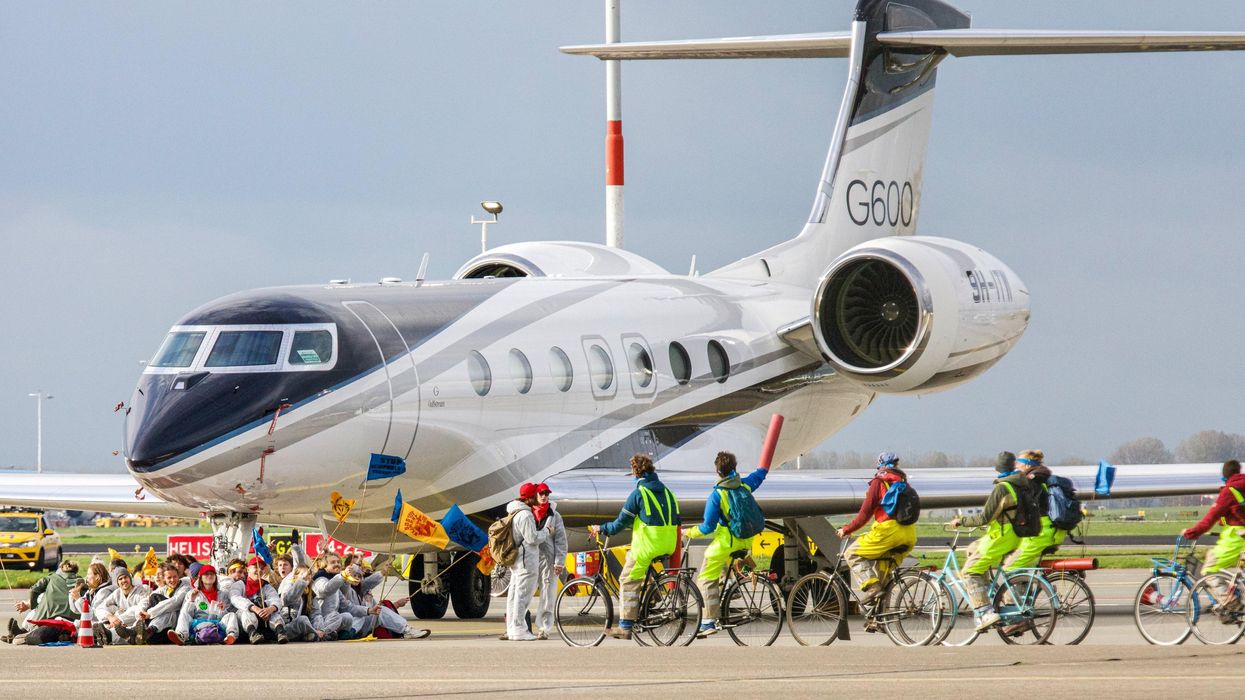New England climate activists are pushing back, calling for “no private jet expansion at Hanscom or anywhere.” In the global struggle to stop new fossil fuel infrastructure, the effort to stop new private jet infrastructure is a potentially winnable first step. And it is a demand rooted in climate justice, as the ultra-wealthy of the Northern hemisphere are the largest carbon polluters.
This week, the Institute for Policy Studies released a report, Hanscom High Flyers, analyzing private jet activity at Hanscom Field since the beginning of 2021. The report, which I co-authored, found that an estimated half of private jet flights out of Hanscom fly to luxury and recreation destinations, many less than an hour from Boston. These include Nantucket, Martha’s Vineyard, the Hamptons on eastern Long Island, and many international destinations such as Barcelona, Spain, and Caribbean islands, Aruba, Bahamas, and Tortola.
Should we set off a carbon bomb of emissions so the wealthiest people on the planet can private jet from Boston to Nantucket or Aruba?
The report analyzed 31,599 private jet flights over an eighteen-month period between January 1, 2022 and July 15, 2023. We found over 2,915 different private jets took off and landed at Hanscom field, traveling to or from 761 unique destinations. Over this period, Hanscom private jets accounted for an estimated 106,676 tons of carbon emissions. For comparison, the average Massachusetts resident emits roughly eight tons a year for every activity—travel, food, buildings, and their share of public infrastructure (globally the average is less than four tons).
The report greatly underestimates the impact of private jet travel at Hanscom because private jet owners can request that the FAA remove their flight tracking data from public registries. Four Boston area billionaires that own private jets—New England Patriot’s owner Robert Kraft, New Balance’s Jim Davis, Red Sox owner John Henry, and Reebok’s Paul Fireman—have all requested their travel data be secret.
The report has struck a nerve, with a front-page Boston Globe story, “Billionaires are responsible for large amounts of climate pollution from Hanscom, a new report finds.”
Among jets with public tracking information, the 20 most frequent Hanscom private jet flyers field took 3,240 flights, both arrivals and departures. These 20 aircraft accounted for over 10% of all Hanscom private jet flights during the 18 months we studied and 14% of total emissions. These 20 frequent flyers burned an estimated 14,930 tons of carbon emissions during this period. Among the top twenty were billionaires John Fish, CEO of Suffolk Construction ($1.2 billion) and Arthur S. Demoulas ($1.3 billion), heir to the Market Basket supermarket chain.
Seven of the top 20 Hanscom users are jets owned by private equity firms based in the Boston area. Charlesbank Partners owns three of the twenty frequent flying jets, with a combined 676 flights emitting an estimated 2,701 tons of carbon. The number one frequent Hanscom flyer, a jet owned by Charlesbank Partners, took a whopping 387 flights in an 18-month period, including 112 flights to and from Nantucket. All three jets made a combined 159 flights to and from Teterboro airport outside New York City, a destination with many other excellent transportation alternatives. Not only is Charlesbank the number one Hanscom jet carbon polluter, they are also a major investor in fossil fuel projects, including a $220 million acquisition of Crosstex Energy, a major natural gas operation in the Southwest, as well as companies involved in gas pipeline services in the Canadian “tar sands.”
The report calls on state regulators and Massport, the public agency that owns Hanscom Field, to reject private jet expansion at Hanscom and any other airports under their control. It also advocates making private jet travelers pay the real environmental and economic cost of their indefensible form of luxury travel.
IPS released a report in May that exposes how private jet travel costs commercial traveler’s money and exacerbates the climate crisis. "High Flyers 2023" found that private aviation made up approximately 1 out of every 6 flights, about 16 percent, handled by the Federal Aviation Administration (FAA), but contribute just 2 percent of the taxes and fees that make up the trust fund that primarily funds the FAA. Private jets also emit at least 10 to 20 times more pollutants than commercial planes per passenger. The average private jet owner has a median wealth of $190 million, according to Wealth-X.
Tripling the private jet capacity of Hanscom field would be the equivalent of blowing off a ‘carbon bomb’ of emissions to enable a handful of multi-millionaires and billionaires to jet to Aspen, West Palm Beach, Jackson Hole, and New England coastal islands.
After a summer of disruptive weather events supercharged by climate change, activists across New England are mounting weekly protests, “No private jet expansion at Hanscom—or anywhere!”



